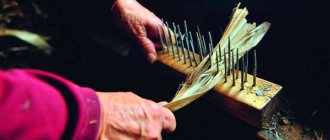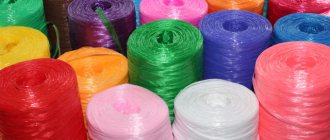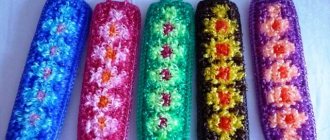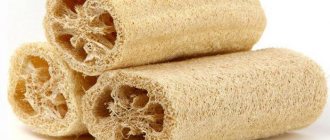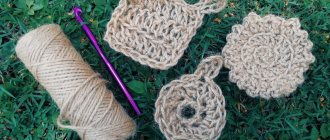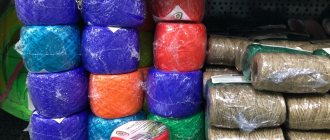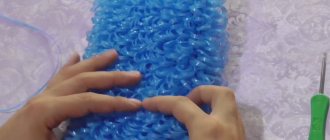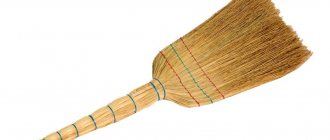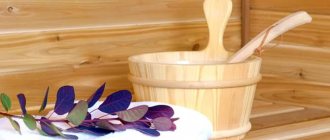Throughout my childhood I washed myself with a natural loofah washcloth! The most interesting thing about this is that I had no idea that it was a loofah! Its interesting shape, fibrous, porous structure did not in any way lead me to believe that it was a dried fruit!
Having grown up, I wondered where the raw materials for this natural washcloth come from... My surprise knew no bounds, honestly! So what is a loofah?
In common parlance, it is customary to write the word loofah with one letter f. However, the name is correctly spelled with two letters f, that is, luffa!
What is luffa
Luffa is an annual plant from the genus of herbaceous vines. It belongs to the pumpkin family, although in appearance it is very similar to a huge cucumber!
Among the people, luffa received a funny nickname - mad cucumber. The size of the fruit can reach up to 50-70 cm, weight from two to three kilograms, and the vine itself has a length of 3 to 6 meters. When dried, the weight of the fruit decreases significantly.
Luffa prefers tropical and subtropical climates, but it also grows in warm regions. Many amateur summer residents successfully cultivate and grow luffa. The plant is whimsical and has its own “requests”. With proper care, attention and care, as well as good climatic conditions on fertile soil, you can get more than three fruits from one bush!
Varieties of luffa
There are more than 50 species of luffa, but only two types of plants have become widespread. Other types of plants produce too small fruits and require quite a lot of care. Therefore, it makes no sense to grow them
- Luffa ribbed
The young fruits of the ribbed luffa are used for cooking. It is stewed, boiled, and added to other dishes. It can be eaten raw and even canned. The pulp of young shoots is juicy and sweetish (very similar to the taste of cucumber).
But when the time comes for the fruit to ripen, the pulp turns into dry fiber. When the fruit dries completely, a sponge of woven dry fibers forms inside. It is taken from the dried fruit and used to make washcloths, rugs, mattress filling, and even to make hats. Filters for insulation are made from pressed luffa sponge.
- Luffa cylindrical (or Egyptian)
This species produces smooth, cylindrical or club-shaped fruits. This plant is often called loofah luffa. However, cylindrical luffa can be used not only for making washcloths.
The scope of its application is the same as that of the sharp-ribbed relatives. But, most often, natural washcloths are made from it. This species has tender and juicy pulp, delicate and thin skin that is easy to peel from dry fruit.
How to make a loofah from luffa fruit
In order to turn a huge fruit into a wonderful bath attribute, you need to know some subtleties.
Only from ripe fruits can you make a sponge, that is, the pulp inside must dry. The color of the fruit will help you find out the exact time; when it turns brown, the time has come! And, of course, don’t forget about the dry tip at the end.
If the fruits have not had time to ripen (for example, you are unlucky with the weather), then they can be collected green and dried in a warm, dry room.
In order to obtain the skeleton of a loofah without much difficulty, you must first work with the fruit. Some summer residents recommend soaking the luffa skin for several days in water to soften it. But, there is a more practical way:
Dip the dry fruit in boiling water for 10-15 minutes, then cool and the skin is easy to peel. Once you get your future loofah, hold the fibers up to the light. Surprisingly many seeds, right!?
You also need to get rid of the seeds; this can be done in two ways - picking them out or putting a washcloth in water. The seeds should come out of the fibers on their own.
Once you have a real luffa sponge in your hands, rinse it in a soapy solution, then in clean water and let it dry in free air. Now it's time for your imagination! You can cover the luffa with soft fabric, cut it into convenient pieces, make double-sided washcloths - in general, whatever you want!
How does a luffa washcloth work on your skin?
Any natural washcloth is hard and luffa is no exception to this rule. The fiber dried, hardened and became a rigid material. Not sissies like to wash themselves with such a washcloth. Who wants to enjoy an excellent skin massage in addition to washing - this washcloth is just for you!
An excellent massage effect, deep cleansing of pores, natural peeling of the skin and maintaining its tone - this is what a loofah can offer you. Although this washcloth is particularly hard, it has a softer effect on steamed skin in a bath.
After washing, the skin becomes elastic and toned. When it comes to preventing the formation of cellulite, a loofah made from luffa ranks first!
A variety of washcloths made from natural materials
Natural washcloths are made from a wide variety of materials. Let's talk about their benefits and use.
Loofah sponge
Loofah is a genus of herbaceous vines of the Cucurbitaceae family. Grows in South Asia and Africa. There are more than 50 species of this plant. We also grow loofah in Russia.
The fruits have the shape of an elongated cylinder with numerous dry fibers inside. The basic properties are similar to washing sponges, which, like the plant itself, are called “Luffa”. Some varieties are edible, and some are used to make soap and even water filters.
Luffa washcloths are an excellent natural massager and a replacement for weekly exfoliation. It removes the dead skin layer well, gives it softness and elasticity. Before hygiene procedures, such a washcloth is soaked for 5-10 minutes in hot water, so it becomes softer and more pliable. Use no more than twice a week, otherwise you may damage your skin. The coarser the fiber, the longer the service life.
Sisal washcloth
Sisal is a natural coarse fiber obtained from Agave leaves.
More than half of the material consists of cellulose. The plant can most often be found in Brazil, Tanzania and Mexico. Since ancient times it has been used for weaving ropes.
Sisal sponges are the toughest of all natural sponges. The material will not soften either steam or soaking in boiling water. You can reduce the friction a little by choosing a coarse knit product or by placing a bar of soap / soft sponge inside. Those with sensitive children's skin should not choose such a washcloth, and adults should use it carefully.
Best suited for cleansing legs, feet, removing old calluses and corns. It is important to treat a sisal washcloth with special antimicrobial agents and dry it dry. Otherwise, pathogenic bacteria will quickly multiply in it, it will become dilapidated and become dangerous for use.
Bast sponge
Bast is a material obtained from part of the bark of a young linden tree or other deciduous trees.
The first mention of bast dates back to the 13th century. From time immemorial, it served as the basis for weaving shoes and even making kitchen utensils.
Bast washcloths cope better than others with the task of deep cleansing pores. They can easily replace a scrub and are perfect for bath procedures. Linden bast contains so-called phytoncides, which kill pathogenic microbes.
If we talk about the disadvantages of bast, it is worth mentioning that the material “does not know how” to foam, small particles come off and can clog the drain, so it is better suited for a bathhouse. Favorable for the development of bacteria. It is important to dry such a washcloth, like any other, after washing, and scald it with boiling water before water procedures for disinfection and softness.
Jute washcloth
Jute is a natural textile fiber. It is produced from plants of the same genus.
A jute washcloth is similar in properties to a sisal washcloth, but has a less harsh “temper”. I really like this washcloth. It should be kept in boiling water before water procedures. Goes well with scented soaps and soft cleansing gels. Accelerates blood circulation, makes skin soft and smooth. Not suitable for frequent use and thin sensitive skin. Service life – 2-4 months.
Needlewomen often knit a jute washcloth themselves.
Chinese nettle washcloth
Chinese nettle or white ramie is a plant of the nettle family. Industrial crop, used for the production of textile fibers. Growing region: East Asia.
Ramie fibers are highly durable, silky and practically not subject to rotting. For centuries they were used for making ropes and sewing sails.
The Chinese nettle washcloth is medium in hardness - it is something between a loofah and sisal. Actively stimulates skin renewal and does not cause allergies. Like bast specimens, it consists of intertwined fibers. Service life – no more than 4 months.
Natural bristle washcloth
Bristles are the hard hair of some animals. In economic terms, the bristles of domestic and wild pigs and horses are more often used.
The material has long been used for the production of brushes and brushes, for stuffing various products. Natural bristle washcloths are most often a brush with a long handle and thick, elastic bristles at the base. There are also oval brushes without a handle.
You can also find a washcloth-mitten made of horsehair. The bristles are tightly twisted into strands and the product itself is woven. You can use it with your favorite products without fear that abrasive particles will “fall through” inside. The massage should be done on well-steamed, undamaged skin.
Ideal for dry massage, it fights cellulite and water stagnation in tissues well. An indispensable attribute for showers and baths. Works well in tandem with cosmetic oils and cleansers. But when wet cleaning the leather, you need to be careful to avoid damage.
Birch bark washcloth
Birch bark is the top layer of birch bark. Moisture-resistant dense natural material.
They build houses, boats from birch bark, make dishes, souvenirs, and boxes. Before paper was invented, it was used for writing. A bunch of birch bark acted as a simple torch.
Birch tar (contained in birch bark) is a safe and effective antiseptic. Therefore, neither fungus, nor mold, nor other microbes are dangerous to birch bark. Over time, such a washcloth will become softer, but it will not stop scrubbing and cleansing pores.
Sea sponge washcloth
A sponge is the simplest multicellular animal. Leads an attached lifestyle, lives mainly in sea water. Today, scientists count about 8 thousand species of sponges.
It has no separate tissues or organs; it lives by literally passing water through itself. Certain cells are responsible for vital processes, including screening out necessary substances from the environment.
A washcloth made from natural sponge is the only eco-friendly washcloth that will last a long time. It can survive even synthetic analogues. Soft and delicate, foams and washes well, does not accumulate an unpleasant odor. Suitable for washing baby skin from birth. Effectively and gently cleanses the skin of not only the body, but also the face. Fights inflammation and dryness, carefully removes makeup. Iodine ions and other biologically active substances in its composition heal and revitalize the skin.
Kese glove (kessa)
My lovely. This is the one I use most often.
Kese is a mitten made from natural materials for body exfoliation. It is put on the hand and tightened on the wrist. The main material is cotton, linen, a mixture of fabrics, silk, synthetic fiber.
For the face, neck and décolleté, you should choose soft fabrics, for the body - harder ones. When used correctly, the glove removes the stratum corneum, “opens” pores, and eliminates minor inflammations. Depending on the accompanying oils and products, it tones or relaxes. Replaces salon body massage. Before use, be sure to clean and steam the skin; you can apply oil or body milk. Kessa is one of the attributes of the hammam.
After the procedure, be sure to thoroughly rinse and dry the glove and store it in a dark place. Do not chemically or machine wash.
How to make a washcloth soft
Not everyone is a fan of harsh effects on the skin. But, since everything natural in itself is very useful for us, you can make a gentle and pleasant sponge for the body from hard luffa.
Children, older people and those who want to maintain their beautiful summer tan for as long as possible love to wash themselves with a soft washcloth. There is still a way out of the “hard” situation.
To make a washcloth soft, brew it with boiling water, cover with a lid and let it “simmer” for 10-15 minutes. That’s basically the whole procedure, the washcloth will become softer and can be used to wash sensitive and delicate skin.
In the bathhouse kingdom everything is much simpler! Father himself, the heat and steam of the bath softens the hard fiber. That’s why I wasn’t afraid of this hard washcloth as a child, the bath itself made it soft.
Of course, there is another way to make a washcloth soft. It is made double-sided, that is, on one side a soft fabric or sponge is sewn onto the luffa. You can also place the sponge inside the skeleton of the luffa, this will give twice as much soap suds, which will naturally reduce the hardness of the washcloth.
Cleaning sponges
I also use luffa to make regular cleaning sponges. They last longer than dishware ones; when they get dirty, I wash them with soap and dry them.
To make them, you will need a cleaned loofah and scraps of fabric - terry (you can use an old towel), cotton fabric or fleece.
I cut the loofah, peeled from skin and seeds, lengthwise with scissors and cut out the partitions (see photo below).
They also make a small, hard washcloth. Something like this:
I moisten the main fabric, level it and leave it to dry. In the photo - the wrong side of the washcloth - you can see the tubercles where the core was attached.
Next, I take fleece scraps and combine them into the required size fabric:
I sew with a prepared luffa sponge:
It sews well, but if it’s a little hard, just moisten it with water from a spray bottle, then it will become softer and easier to handle.
I leave this pocket through which I turn the product right side out. And I cut corners.
Separately, I make a loop from a scrap of the same fleece.
I'm sewing it in. The cleaning sponge is ready!
One side view:
And from the reverse:
They serve depending on the load - from a week to six months. They are easy to make, it just looks long in the description. The number of washcloths depends on the size of the fetus.
There are many design options, depending on the purpose. I love these microfiber sponges. Microfiber cloths are sold in any hardware store; they absorb moisture well and do not leave streaks, and in combination with a loofah sponge you get a good washcloth.
How to care for a loofah
The problem with all natural washcloths is that too many different bacteria and microbes like to make their permanent home in them. Here is another proof that all living things in the world love natural things!
However, if you want to use a loofah sponge for as long as possible, you cannot allow “tenants” into its porous structure. They will simply eat your washcloth, the fibers will spread, it will become frayed and torn.
That is, you definitely need to take care of your washcloth! After use, rinse it thoroughly, pour boiling water over it and be sure to dry it! In the bathhouse, the drying process happens somehow by itself - the kingdom is hot, the queen of the oven rules the show and dries everything!
But in an apartment, in a wet bath, the service life of a washcloth is significantly reduced. You can try drying it on a hot radiator in winter, and in open air in summer (for example, on a balcony).
This is my story about a natural loofah made from luffa. Of course, no two people are the same; everyone has different tastes and preferences. But this washcloth has taken root in our family for so long that I recommend that you get to know it. I think you won't be disappointed!
Loofah for skin care
Moisturizing mask
This wonderful mask is suitable for all our skin, for the face and hands, heels and décolleté. Grind the loofah leaves and add a little honey, a few drops of olive oil and apply to the skin for 10 minutes. Rinse off with warm water and apply nourishing cream.
Lotion
Squeeze the juice from the young stems and leaves of the loofah and wipe your face and hands with it. It acts as a mild bleaching agent.
Use loofah sponges and sponges, they are good for removing makeup. Apply cleanser to a dampened sponge and wipe your face in a circular motion, then rinse with warm water.
This cleansing improves blood circulation and removes old cells, which helps even out skin color. When caring for your body skin, it is highly recommended to use a loofah sponge.
Loofah is used in making handmade soap; this plant is very popular among soap makers. Soap made from loofah has an exfoliating effect, which is very beneficial for our skin.
Today we met an amazing and useful loofah plant, try planting it in your garden and grow your own loofahs.
The site “I am a villager” wishes you good health and good mood!
If you liked the article, please share it with your friends, press the social network buttons. Write your comments, it is very interesting to know your opinion about the loofah and washcloths made from it.
